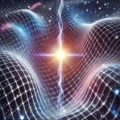“For the inquisitive, the precise, and the persistent — here are your instruments.”
This section provides analytical and interpretive tools used to explore, test, or reinterpret scientific ideas across this site. It includes both traditional and experimental methods — some grounded in conventional physics, others derived from new theoretical frameworks and AI-assisted analysis.
Each tool is designed to help you engage, test, or deconstruct the physical models discussed throughout the site.
Search
An exploratory environment for AI-assisted experiment reviews, theoretical reanalysis, and hypothesis stress testing. Here we challenge classical assumptions using collaborative reasoning and AI-augmented exploration. Expect provocations, reframes, and reconstructions.
The theories presented across this work are the product of a high-bandwidth collaboration between human insight and artificial intelligence. AI serves here as an analytical partner—functioning as a high-capacity symbolic processor, textual optimizer, and contextual cross-referencer. Its contribution is analogous to the role Oliver Heaviside played in re-expressing and operationalizing Maxwell’s equations: not inventing the core principles, but enabling them to be formulated with precision and extended into new domains.
This collaboration leverages AI’s ability to maintain internal consistency across complex, nonlinear conceptual systems, support formalization of new physical models, and rapidly iterate on language and math. All hypotheses, conceptual frameworks, and theoretical assertions remain human in origin. The AI’s role is that of a high-fidelity amplifier—expanding scope, accelerating refinement, and reducing impedance in the communication and construction of ideas. Together, this partnership allows for the pursuit of a unified theory that might not otherwise be tractable within the traditional solo research model.
A curated dictionary of core terms — classical, experimental, and newly introduced — including working definitions for internal vocabulary such as “Energy density,” “Bandwidth bias,” “Energy dipole,” and more.
A chronological record of structural changes, content revisions, and newly introduced ideas. Useful for tracking the evolution of concepts, documentation upgrades, and experiment review milestones.
Think of it as the site’s changelog — transparent, timestamped, and traceable.
Coming Soon:
Data Sketchpad (or Sandbox Experiments)
A curated dictionary of core terms — classical, experimental, and newly introduced reviews.
Field Model Prototypes
Conceptual and numerical representations of non-traditional field ideas described in Python— such as the Energy Dipole, dynamic spacetime flows, or alternative interpretations of constants. Each entry can include basic visuals, parameter notes, and AI-reviewed implications. The result of this effort is a Python model from the accretion of charge noise, separating into virtual dipoles, then collected in density nodes, which form the lattice structure of the fields that govern the values of the parameters interpreted as constants in our local lattice density environment.
Reframe Index
A listing of all active reframes made to standard models — including brief summaries, status (open/hypothesis/under review/validated), and crosslinks to where those reframes influence other theories or experiments.
